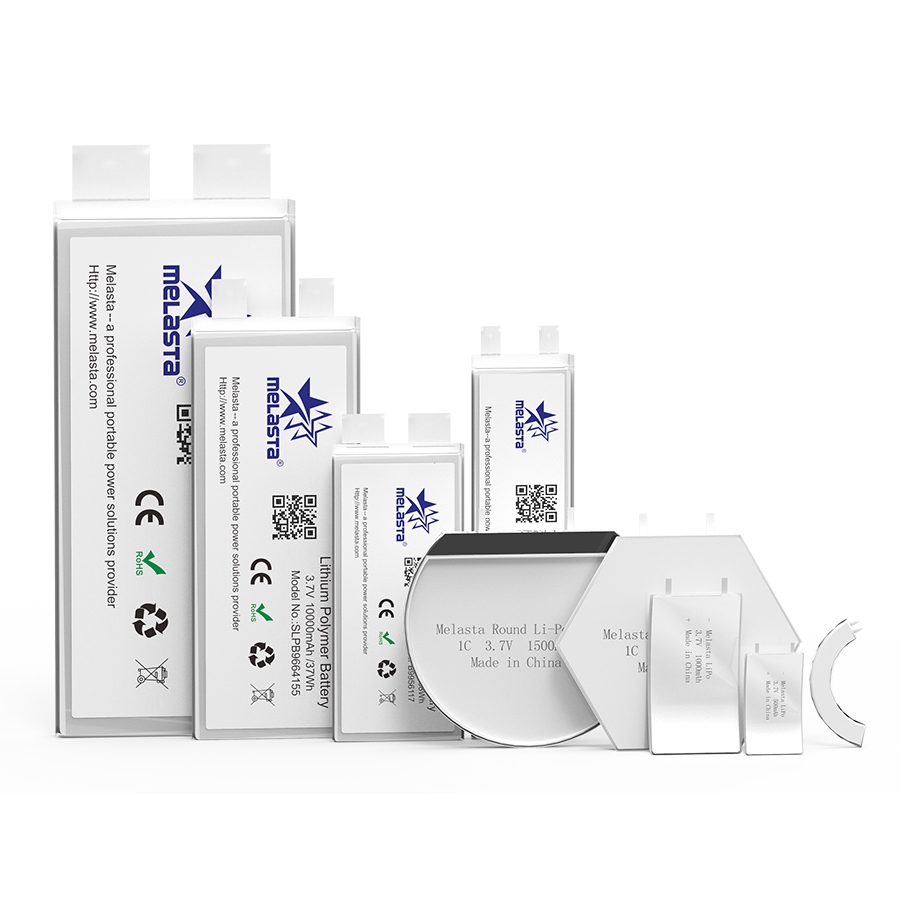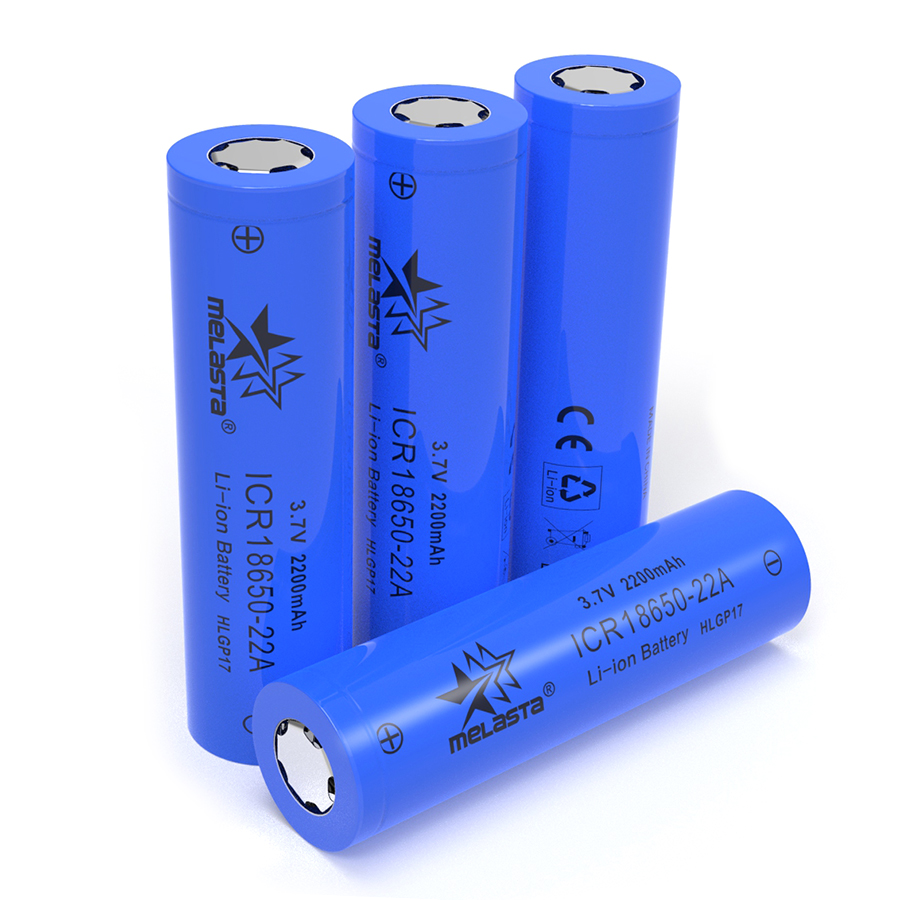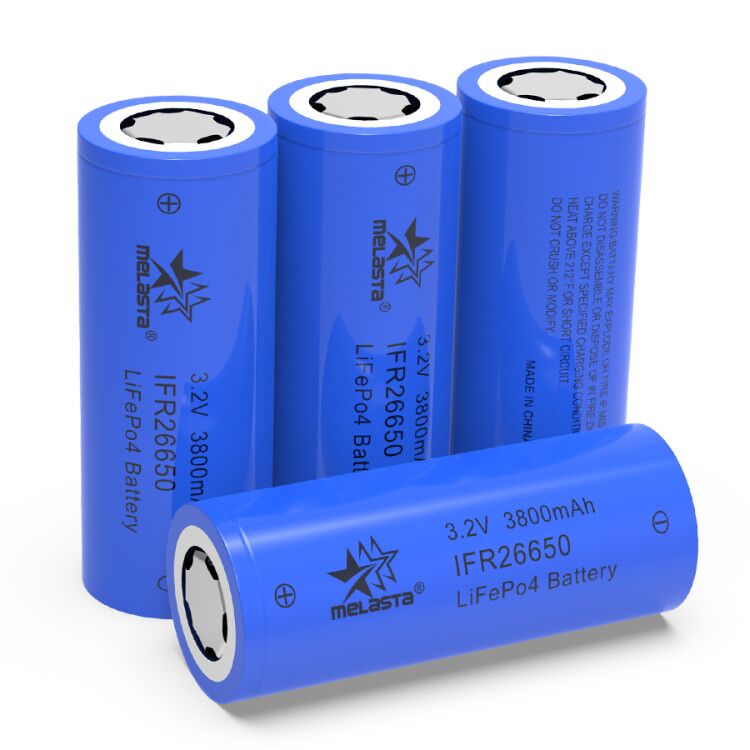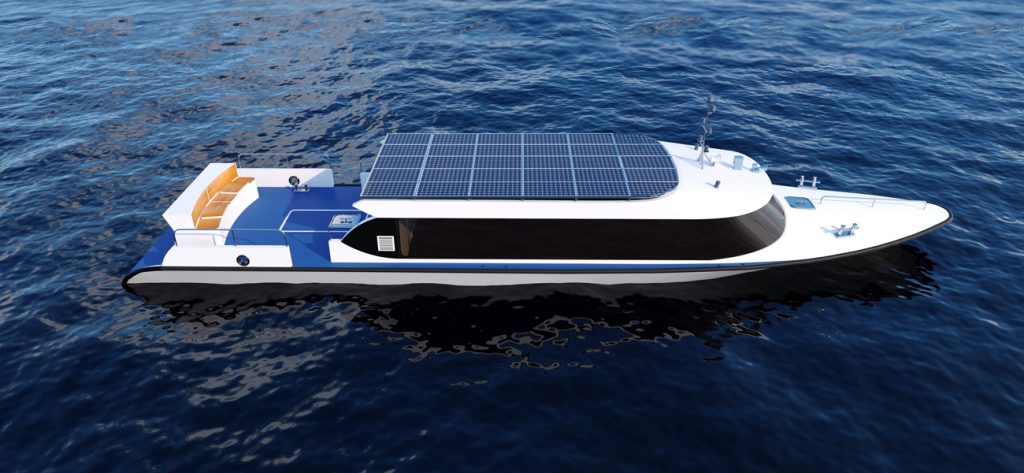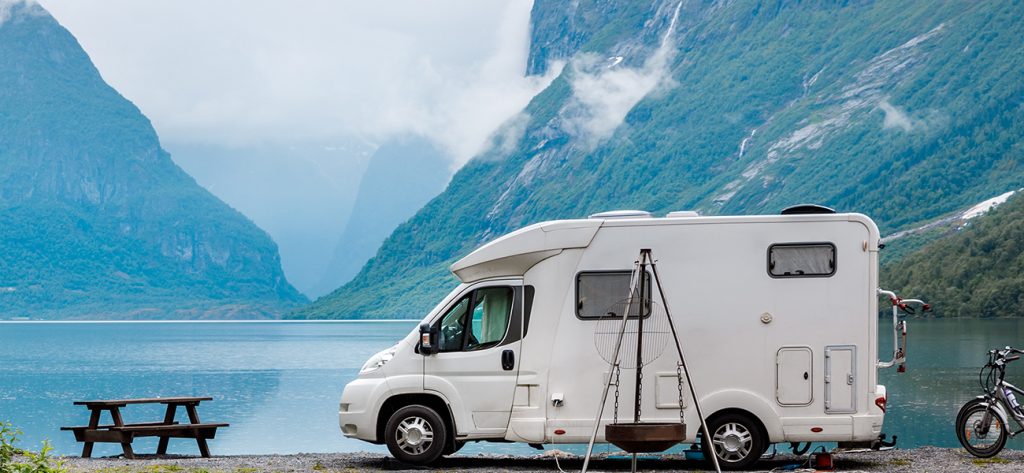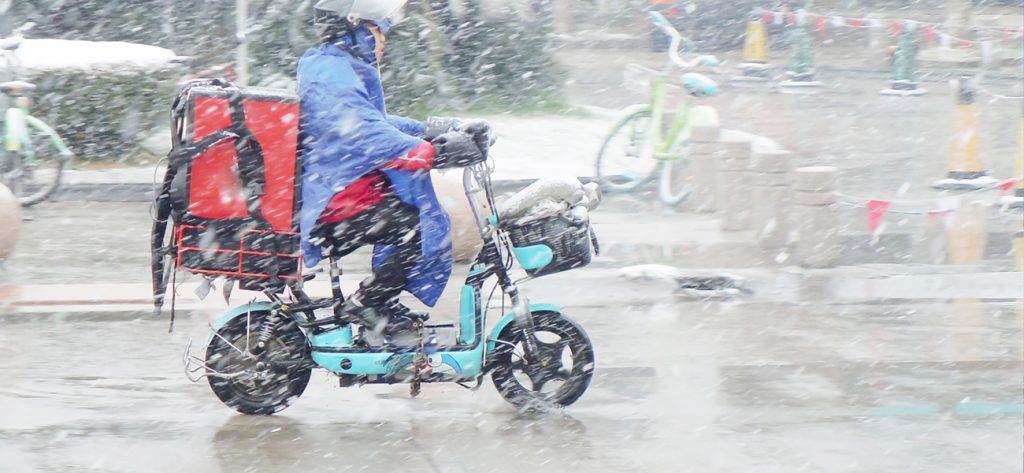Lithium-Ion (Li Ion) Battery Cell
Li-ion batteries have multiple chemistries such as Nickel Manganese Cobalt (NCM), Lithium Cobalt Oxide (LiCoO2), and Lithium Ion Manganese Oxide (LiMnO2). Mostly these batteries are available in standard size which is 18650. These batteries are commonly used in laptops, power tools, robots and specially in electric vehicles. With the use of different advanced technologies these batteries are becoming safer. The nominal Voltage of these battery cells are 3.6, 3.7, and sometimes 3.65 volts.
Available Lithium Ion Battery Chemistries
Melasta uses different chemistries according to the customer demand for Lithium Ion Cells production. We always strive for the best quality by using the international quality standards.
LiCoO2 – Lithium Cobalt Oxide
This chemistry is popular choice for laptops, mobile phones, and digital camera and e-bikes due its high specific energy property. This battery made of graphite carbon as anode and cobalt oxide as cathode. Cobalt is the active material which gives properties to the battery.
LiMnO2 – Lithium Ion Manganese Oxide
LiMnO2 battery is known for the characteristics such as fast charging and high current discharging with moderate heat buildup. These batteries can be discharge at 20-30A with very normal thermal buildup. it may discharge at 50A pulse load but it depends on the other specifications as well. These batteries are the best choice for power tools, medical equipment’s, RC toys, Hybrid cars, and electric vehicles.
NCM – Nickel Manganese Cobalt
This Chemistry is the combination of nickel-manganese-cobalt. These batteries can be customized either as power cells or as energy cells. NMC is the popular choice for power tools, e-bikes, and other electric power trains. Because of the combination of blended li-ion and NMC can reduce the cost and make the battery cost effective with very good performance.
Melasta Lithium Ion Battery Unique Features
Research and Development department has enabled Melasta to produce high quality. Light weight and more power cells in cylindrical shape. We have developed different sizes in cylindrical shape according to the customer demand.
| 1. High Discharge Current | 6. Low Self-Discharge |
| 2. High Reliability | 7. High Energy Density |
| 3. High Capacity | 8. Various Shapes |
| 4. Longer Life Cycles | 9. No Memory Effect |
| 5. High Safety | 10. Low Impedance And Heat Generation |
Lithium Ion Battery Application
- Medical Devices
- Portable Power Generators
- Robotics Battery
- Electric Bike Battery
- Mobile Phone Battery
- Laptop Battery
- Industrial Application
- Advanced Agriculture Equipment’s
Regular Type Lithium Ion Battery
| Item No. | Cell Model | Nominal Voltage (V) | Nominal Capacity (mAh) | Dimensions(mm) | Standard Charge Rate(C) | Fast Charge Rate(C) | Max Cont. Dis. Rate(C) | Pulse Dis. Current | Charge Cut-off Vol(V) | Dis. Cut-off Vole(V) | |
| Diameter | Height | ||||||||||
| 1 | ICR14430E-500 | 3.6 | 500 | 14.5 | 43.5 | 0.5 | 1 | 1 | 3 | 4.2 | 3 |
| 2 | ICR14430E-650 | 3.6 | 650 | 14.5 | 43.5 | 0.5 | 1 | 1 | 3 | 4.2 | 3 |
| 3 | ICR14450E-700 | 3.6 | 700 | 14.5 | 45.5 | 0.5 | 1 | 1 | 3 | 4.2 | 3 |
| 4 | ICR14500E-650 | 3.6 | 650 | 14.5 | 50.5 | 0.5 | 1 | 1 | 3 | 4.2 | 3 |
| 5 | ICR14500E-800 | 3.6 | 800 | 14.5 | 50.5 | 0.5 | 1 | 1 | 3 | 4.2 | 3 |
| 6 | ICR18500E-1900 | 3.6 | 1900 | 18.5 | 50.5 | 0.5 | 1 | 1 | 3 | 4.2 | 3 |
| 7 | ICR18650E-2000 | 3.6 | 2100 | 18.15 | 65.2 | 0.5 | 1 | 1 | 3 | 4.2 | 3 |
| 8 | ICR18650E-2200 | 3.6 | 2200 | 18.15 | 65.2 | 0.5 | 1 | 1 | 3 | 4.2 | 3 |
| 9 | ICR18650E-2500 | 3.6 | 2500 | 18.35 | 65.2 | 0.5 | 1 | 1 | 3 | 4.2 | 3 |
| 10 | ICR18650E-2600 | 3.6 | 2600 | 18.35 | 65.2 | 0.5 | 1 | 1 | 3 | 4.2 | 3 |
| 11 | ICR18650E-2900 | 3.6 | 2900 | 18.35 | 65.2 | 0.5 | 1 | 1 | 3 | 4.2 | 3 |
| 12 | ICR18650E-3350 | 3.6 | 3350 | 18.35 | 65.2 | 0.5 | 1 | 1 | 3 | 4.2 | 3 |
| 13 | ICR26650E-2900 | 3.6 | 2900 | 26.15 | 65.6 | 0.5 | 1 | 1 | 3 | 4.2 | 3 |
| 14 | ICR26650E-3350 | 3.6 | 3350 | 26.15 | 65.6 | 0.5 | 1 | 1 | 3 | 4.2 | 3 |
| 15 | ICR26650E-4500 | 3.6 | 4500 | 26.15 | 65.6 | 0.5 | 1 | 1 | 3 | 4.2 | 3 |
| 16 | ICR26650E-5000 | 3.6 | 5000 | 26.15 | 65.6 | 0.5 | 1 | 1 | 3 | 4.2 | 3 |
| 17 | ICR26650E-5500 | 3.6 | 5500 | 26.15 | 65.6 | 0.5 | 1 | 1 | 3 | 4.2 | 3 |
| 18 | ICR21700E-4000 | 3.6 | 4500 | 21.5 | 70.5 | 0.5 | 1 | 1 | 3 | 4.2 | 3 |
| 19 | ICR21700E-4200 | 3.6 | 4500 | 21.5 | 70.5 | 0.5 | 1 | 1 | 3 | 4.2 | 3 |
| 20 | ICR21700E-4500 | 3.6 | 4500 | 21.5 | 70.5 | 0.5 | 1 | 1 | 3 | 4.2 | 3 |
| 21 | ICR21700E-4800 | 3.6 | 4800 | 21.5 | 70.5 | 0.5 | 1 | 1 | 3 | 4.2 | 3 |
| High Drain Lithium Ion Battery Cell | |||||||||||
| Item No. | Cell Model | Nominal Voltage (V) | Nominal Capacity (mAh) | Dimensions(mm) | Standard Charge Rate(C) | Fast Charge Rate(C) | Max Continuous Discharge Rate(C) | Pulse Discharge Current | Charge Cut-off Voltage(V) | Discharge Cut-off Voltage(V) | |
| Diameter | Height | ||||||||||
| 1 | ICR18500HP-1100 | 3.6 | 1100 | 18.5 | 50.5 | 0.5 | 1 | 10 | 15 | 4.2 | 3 |
| 2 | ICR18650P-2000 | 3.6 | 2000 | 18.15 | 65.3 | 0.5 | 1 | 5 | 8 | 4.2 | 3 |
| 3 | ICR18650HP-2000 | 3.6 | 2000 | 18.15 | 65.3 | 0.5 | 1 | 10 | 15 | 4.2 | 3 |
| 4 | ICR18650UP-2000 | 3.6 | 2000 | 18.15 | 65.3 | 0.5 | 1 | 15 | 20 | 4.2 | 3 |
| 5 | ICR18650P-2200 | 3.6 | 2200 | 18.15 | 65.3 | 0.5 | 1 | 3 | 5 | 4.2 | 3 |
| 6 | ICR18650P-2500 | 3.6 | 2500 | 18.15 | 65.3 | 0.5 | 1 | 5 | 8 | 4.2 | 3 |
| 7 | ICR26650P-4500 | 3.6 | 4500 | 26.15 | 65.6 | 0.5 | 1 | 3 | 5 | 4.2 | 3 |
Lithium Iron Phosphate (LiFePO4) Cylindrical Cells
LiFePO4 Chemistry
LiFePO4 is the formula name of Lithium Iron Phosphate, also known as LFP. The nominal voltages of this battery chemistry are 3.2V. It replaced other battery technologies because of its technological advancement and safety features. This latest technology is being used in a number of application from small devices consumer devices to heavy duty industrial machines. These cells have high density and light weight which enable this technology to use in multiple devices.Lithium Iron Phosphate Cylindrical Cells
Cylindrical cells one of the most widely used lithium ion battery shapes due to ease to use and good mechanical stability. The tubular cylindrical shape can withstand high internal pressures without collapsing. Melasta produces multiple sizes and capacities according to the customer requirement. These cells are mostly used in Electrical vehicles such as golf cart and in power tools.
Salient Features of Melasta LiFePO4 Battery
Melasta is one of the main producer and supplier for LiFePO4 batteries in China. Our batteries have the features due to our superior technologies and state of the art manufacturing facilities and investment on research and development.
- Very long cycle life
Melasta LiFePO4 battery has very long lifespan due to its superior performance, and proven quality. it provides more than 2500 life cycles with 80% Depth of Discharge (DOD)at 25℃ temperature.
- Light Weight
These batteries are very light weight as compared to the Lead-acid batteries and all other old technologies. Due to this property these batteries are popular batteries in e-mobility industry to outperform the old technologies such as lead-acid batteries.
- Environment Friendly
Melasta uses high quality material for battery production. These LiFePO4 cells do not contain any hazardous material so these are fully environment friendly and recyclable.
- Wide Temperature Range -10℃~to 60℃
Operational temperature range is very wide it operates on extreme temperatures. The normal operational temperature range is from -10℃ to +60℃. These cells are also used as starter batteries in extremely cold temperatures.
- Very Low Internal Resistance
These batteries have very low internal resistance which is very favorable for its safety. It delivers high current on demand and keep the battery temperature at normal level.
- Maintenance Free
Normally old technology batteries such as lead-acid batteries required regular maintenance which increases the over cost of the battery system. Melasta Lithium Iron Phosphate Battery out performs the lead acid battery and provides the maintenance free solution.
Low Temperature Lithium Iron Phosphate (LiFePO4) Cell Technology
- Stable discharging current at Low- temperature
2.Suitable cells for military equipment, aerospace industry, and IoT Devices in freezing weather
- Can be used 70% of initial capacity at -20℃
- Highest Safety Standards
- Applications: Scientific investigations into polar regions, electrical-power telecommunication, AGVs, RVs, and electric ice augers.
LiFePO4 Battery Applications
- Recreational Vehicles
- Golf Cart Battery
- Special Medical Equipments
- Energy Storage Systems
- Electric Mobility
6.Telecommunication
- Electric Boats
- UPS System
Regular Type Cylindrical LiFePO4 Battery
| Sr No. | Cell Model | Nominal Vol. (V) | Nominal Capacity (mAh) | Dimensions(mm) | Standard Charge Rate(C) | Fast Charge Rate(C) | Max Con. Dis. Rate(C) | Pulse Dis. Rate(C) | Charge Cut-off Vol. (V) | Dis. Cut-off Vol.(V) | Weight approx.(g) | |
| Diameter | Height | |||||||||||
| 1 | IFR10130E-30 | 3.2 | 30 | 10.3 | 13.2 | 0.5 | 1 | 1 | 3 | 3.65 | 2.0 | 5 |
| 2 | IFR10440E-200 | 3.2 | 200 | 10.3 | 44.2 | 0.5 | 1 | 1 | 3 | 3.65 | 2.0 | 7 |
| 3 | IFR14430E-250 | 3.2 | 250 | 14.2 | 43.3 | 0.5 | 1 | 1 | 3 | 3.65 | 2.0 | 11 |
| 4 | IFR14500E-250 | 3.2 | 250 | 14.2 | 50.2 | 0.5 | 1 | 1 | 3 | 3.65 | 2.0 | 14 |
| 5 | IFR14430E-300 | 3.2 | 300 | 14.2 | 43.3 | 0.5 | 1 | 1 | 3 | 3.65 | 2.0 | 12 |
| 6 | IFR16340E-300 | 3.2 | 300 | 16.2 | 34.2 | 0.5 | 1 | 1 | 3 | 3.65 | 2.0 | 13.5 |
| 7 | IFR16340E-400 | 3.2 | 400 | 16.2 | 34.2 | 0.5 | 1 | 1 | 3 | 3.65 | 2.0 | 15 |
| 8 | IFR14430E-400 | 3.2 | 400 | 14.2 | 43.3 | 0.5 | 1 | 1 | 3 | 3.65 | 2.0 | 13 |
| 9 | IFR14500E-400 | 3.2 | 400 | 14.2 | 50.2 | 0.5 | 1 | 1 | 3 | 3.65 | 2.0 | 15.5 |
| 10 | IFR14500E-500 | 3.2 | 500 | 14.2 | 50.2 | 0.5 | 1 | 1 | 3 | 3.65 | 2.0 | 16 |
| 11 | IFR14500E-600 | 3.2 | 600 | 14.2 | 50.2 | 0.5 | 1 | 1 | 3 | 3.65 | 2.0 | 18 |
| 12 | IFR18500E-600 | 3.2 | 600 | 18.5 | 50.2 | 0.5 | 1 | 1 | 3 | 3.65 | 2.0 | 26 |
| 13 | IFR18500E-750 | 3.2 | 750 | 18.5 | 50.2 | 0.5 | 1 | 1 | 3 | 3.65 | 2.0 | 28 |
| 14 | IFR18500E-900 | 3.2 | 900 | 18.5 | 50.2 | 0.5 | 1 | 1 | 3 | 3.65 | 2.0 | 30 |
| 15 | IFR18500E-1000 | 3.2 | 1000 | 18.5 | 50.2 | 0.5 | 1 | 1 | 3 | 3.65 | 2.0 | 32 |
| 16 | IFR22430E-1100 | 3.2 | 1100 | 22.5 | 43.3 | 0.5 | 1 | 1 | 3 | 3.65 | 2.0 | 45 |
| 17 | IFR22430E-1200 | 3.2 | 1200 | 22.5 | 43.3 | 0.5 | 1 | 1 | 3 | 3.65 | 2.0 | 47 |
| 18 | IFR18650E-1400 | 3.2 | 1400 | 18.5 | 65.3 | 0.5 | 1 | 1 | 3 | 3.65 | 2.0 | 42 |
| 19 | IFR18650E-1500 | 3.2 | 1500 | 18.5 | 65.3 | 0.5 | 1 | 1 | 3 | 3.65 | 2.0 | 42 |
| 20 | IFR18650E-1600 | 3.2 | 1600 | 18.5 | 65.3 | 0.5 | 1 | 1 | 3 | 3.65 | 2.0 | 40 |
| 21 | IFR18650E-1800 | 3.2 | 1800 | 18.5 | 65.3 | 0.5 | 1 | 1 | 3 | 3.65 | 2.0 | 41 |
| 22 | IFR22650E-1800 | 3.2 | 1800 | 22.5 | 65.3 | 0.5 | 1 | 1 | 3 | 3.65 | 2.0 | 60 |
| 23 | IFR22650E-1900 | 3.2 | 1900 | 22.5 | 65.3 | 0.5 | 1 | 1 | 3 | 3.65 | 2.0 | 62 |
| 24 | IFR26430E-1900 | 3.2 | 1900 | 26.5 | 43.3 | 0.5 | 1 | 1 | 3 | 3.65 | 2.0 | 54 |
| 25 | IFR22650E-2000 | 3.2 | 2000 | 22.5 | 65.3 | 0.5 | 1 | 1 | 3 | 3.65 | 2.0 | 63 |
| 26 | IFR26430E-2000 | 3.2 | 2000 | 26.5 | 43.3 | 0.5 | 1 | 1 | 3 | 3.65 | 2.0 | 56 |
| 27 | IFR26650E-3000 | 3.2 | 3000 | 26.15 | 65.6 | 0.5 | 1 | 1 | 3 | 3.65 | 2.0 | 84 |
| 28 | IFR26650E-3200 | 3.2 | 3200 | 26.15 | 65.6 | 0.5 | 1 | 1 | 3 | 3.65 | 2.0 | 84 |
| 29 | IFR26650E-3300 | 3.2 | 3300 | 26.2 | 65.6 | 0.5 | 1 | 3 | 8 | 3.65 | 2.0 | 84 |
| 30 | IFR26650E-3400 | 3.2 | 3400 | 26.2 | 65.6 | 0.5 | 1 | 3 | 5 | 3.65 | 2.0 | 84 |
| 31 | IFR26650E-3600 | 3.2 | 3600 | 26.15 | 65.6 | 0.5 | 1 | 3 | 5 | 3.65 | 2.0 | 85 |
| 32 | IFR26650E-3800 | 3.2 | 3800 | 26.15 | 65.6 | 0.5 | 1 | 1 | 3 | 3.65 | 2.0 | 85 |
| High Drain Type Cylindrical LiFePO4 Battery | ||||||||||||
| Sr No. | Cell Model | Nominal Vol. (V) | Nominal Capacity (mAh) | Dimensions(mm) | Standard Charge Rate(C) | Fast Charge Rate(C) | Max Continuous Dis. Rate(C) | Pulse Dis. Current | Charge Cut-off Vol.(V) | Dis. Cut-off Vol.(V) | Weight approx.(g) | |
| Diameter | Height | |||||||||||
| 1 | IFR18500P-800 | 3.2 | 800 | 18.5 | 50.2 | 1 | 2 | 10 | 12A ≤ 1S | 3.65 | 2.0 | 26 |
| 2 | IFR18500P-900 | 3.2 | 900 | 18.5 | 50.2 | 1 | 2 | 10 | 13.5A ≤ 1S | 3.65 | 2.0 | 28 |
| 3 | IFR22430P-950 | 3.2 | 950 | 22.5 | 43.3 | 1 | 2 | 10 | 14.25A ≤ 1S | 3.65 | 2.0 | 45 |
| 4 | IFR18650P-1100 | 3.2 | 1100 | 18.35 | 65.5 | 2 | 5 | 30 | 40A ≤ 5S | 3.65 | 2.0 | 41 |
| 5 | IFR18650P-1400 | 3.2 | 1400 | 18.35 | 66.3 | 1 | 3 | 10 | 21A ≤ 5S | 3.65 | 2.0 | 40 |
| 6 | IFR22650P-1600 | 3.2 | 1600 | 22.5 | 65.3 | 1 | 3 | 10 | 24A ≤ 3S | 3.65 | 2.0 | 60 |
| 7 | IFR26650P-3000 | 3.2 | 2900 | 26.15 | 65.6 | 1 | 3 | 10 | 45A ≤ 5S | 3.65 | 2.0 | 84 |
| 8 | IFR26650P-2300 | 3.2 | 2300 | 26.15 | 65.6 | 2 | 5 | 20 | 70A ≤ 5S | 3.65 | 2.0 | 86 |
| 9 | IFR26650P-2500 | 3.2 | 2500 | 26.2 | 65.5 | 1 | 5 | 20 | 125A ≤ 3S | 3.65 | 2.0 | 86 |
| 10 | IFR26650P-3000B | 3.2 | 3000 | 26.9 | 65.5 | 1 | 3 | 10 | 60A ≤ 10S | 3.65 | 2.0 | 85 |
Why Lithium Marine Batteries are Great for Your Boats?
How do you provide power to a boat? Apparently, using solar energy and a generator is a terrific method to conserve cash and become more sympathetic to our environment. Irrespective of the approach you utilize, you will require someplace to store that amount of power. For this purpose, you will require a battery. A few individuals direct themselves far from utilizing lithium marine batteries because of their frightening expense. Do not let this thing hold you back. There’re a lot of advantages of lithium batteries, much of which in fact reduce the overall expense if used for a long period.
Here you can go through the best advantages of selecting lithium marine batteries for a vessel.
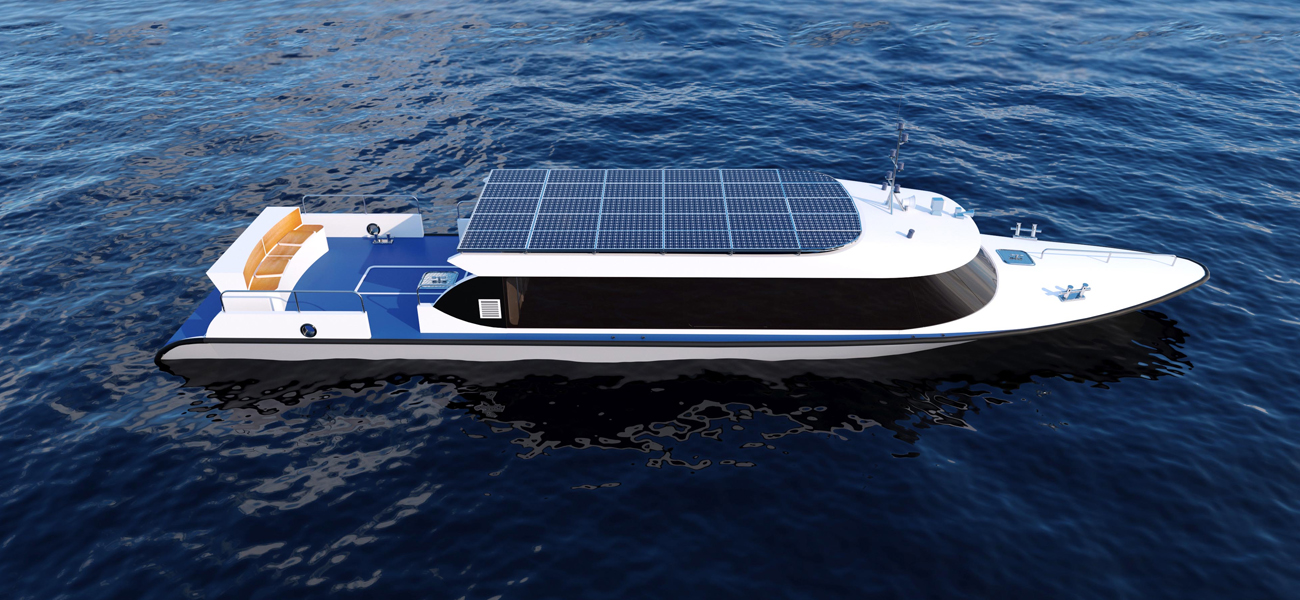
Life Span of Marine Battery
AGM batteries can just last to around 1k cycles. Moreover, you need to become persistent about not draining these batteries more than 50 percent so that they can be kept in a great form. A lithium battery’s lifetime is rather excellent. While discharging lithium batteries to 80 percent, we can anticipate them to keep on lasting for more than 2k cycles.
Increased Usable Amp-Hours
A lithium battery can be discharged 100 percent. To have more lifetime, it is a great thing to just discharge lithium batteries to 80 percent. Even after that, a 300-ampere-hr battery bank would simply supply us with 240 functional ampere-hrs, considerably greater than other kinds of batteries.
Both lead-acid and AGM batteries shouldn’t be discharged more than 50 %. Hence, we can just utilize 172 of them prior to requiring a charge, even if we possess a battery bank which supplies 345 ampere-hrs.
Steady Voltage
You have actually most likely observed the unsteady voltage if you have actually spent time on boats. Things are working out simply great till something new comes in, such as a microwave or fridge. The decorations and lights may dim slightly as a voltage drop occurs whilst the battery has a hard time powering the new thing.
Lithium batteries maintain more resting voltage, generally around 13.2 Volts as compared to 12.8 or 12.6 for a completely charged lead-acid battery. The resting voltage starts to lower when a lead-acid battery loses its charge. Then, naturally, there’s that extreme drop while installing an extra load.
A lithium battery’s resting voltage does not alter considerably irrespective of the amount it has actually been discharged or the load. So, this aids the devices to operate with greater efficiency. We might discover that they need a lower time or less amps to do the very same quantity of work.
We likewise will not require to possess any extra “starting” batteries. These lithium batteries have the ability to manage the hefty draw of an additional load.
Mass
We already understand how essential mass is on the boat. A heavyweight boat implies burning additional fuel to reach a location. Additionally, a very heavy boat is not safe. Once you are worried about the mass of your boat, lithium marine batteries look like a fantastic option. These batteries have 1/2 of the mass of lead-acid batteries and around a 3rd lower than AGM ones.
This mass cost savings does not even consider the variance in life span and usable ampere-hrs. You will need less lithium batteries to achieve the very same no. of usable ampere-hrs. This suggests that lithium batteries are not only lighter and smaller sized, but likewise, you will require less batteries to carry out the exact same task. The cost saving in mass (and area) simply keeps building up.
Preserve Their Charge
Apart from charging rapidly, the rate of self-discharge of a lithium battery is much less than that of the lead-acid ones. Due to the fact that it is not in usage, this is the amount of charge that a battery loses.
Quick Charging
Discharging lithium batteries more implies that we are going to wait for them to charge for a longer duration? Incorrect!
You might be acquainted with viewing a battery charge till 90 percent and after that take hrs to fill the remaining amount. This happens because of the battery’s internal resistance and the stages of charging. A lead-acid battery has a three-phase cycle. In the initial push, the battery quickly charges to 80 to 90 %. The 3rd stage includes a sluggish trickle charge which implies it frequently takes hrs for that part. You likewise need to totally charge these batteries every time to effectively protect their life expectancy.
Having lower internal resistance, lithium batteries avoid that sluggish absorb stage. In case you just have 1 hr readily available to charge a battery, you can get benefit from it.
No Upkeep
A lead-acid battery does not require much effort. You simply need to put water once in a while. When you shift to lithium batteries, your work is even more reduced. It is incredible that you need to do less effort to water the batteries.
Less Wasted Energy
A lithium battery can utilize and maintain about 99 percent of its energy. A new lead-acid battery loses around 15 percent of its energy because of resistance and other elements. As it gets old, the % of usable energy narrows down more.
Are Lithium Marine Batteries Best for You?
They really aren‘t as pricey as they appear as soon as you take into consideration the advantages of lithium marine batteries. These lithium batteries lose less energy, provide extra power, and last longer implying you need to purchase less batteries gradually. Additionally, they have a less mass and need lower amount of energy for charging. These factors make the in advance financial investment worthy for many individuals.
Are you prepared to switch to lithium marine batteries or lithium batteries? Have a look at our range of lithium marine batteries and lithium batteries to power your trips. Do you still have concerns? Do not hesitate to call us! We will be more than pleased to lay all your doubts to rest.
Choosing a Lithium-Ion RV Battery
On the roadway or at some camping area, the Recreational Vehicle of your customers is their house far apart from their actual residence. That’s why possessing an effective source of energy is necessary. In case you desire the consumers to experience something comfy with the product, they require constant power to prepare supper and provide lights to their Recreational Vehicle.
Picking a Li-ion Recreational Vehicle battery is a smart method to avoid failure of battery and other mechanical troubles related to lead-acid options. But you should not restrict your hunt to unimportant, regional battery companies. To discover the very best Recreational Vehicle battery for the consumers‘ requirements, broaden your hunt to comprise the international market.
Partnering with a worldwide battery company assists you to discover what you are searching for rather quickly due to the fact that big suppliers have a larger stock to select from. Battery rates are in some cases hard to compare because of the distinctions in quality so search for a supplier that provides a three to 5 yr guarantee.
As you go shopping around the lithium battery market, attempt not to end up being overwhelmed by alternatives. You need to likewise talk with a sales agent to find out how the batteries you get are produced. This is a great way to find out the quality of lithium-ion RV batteries.
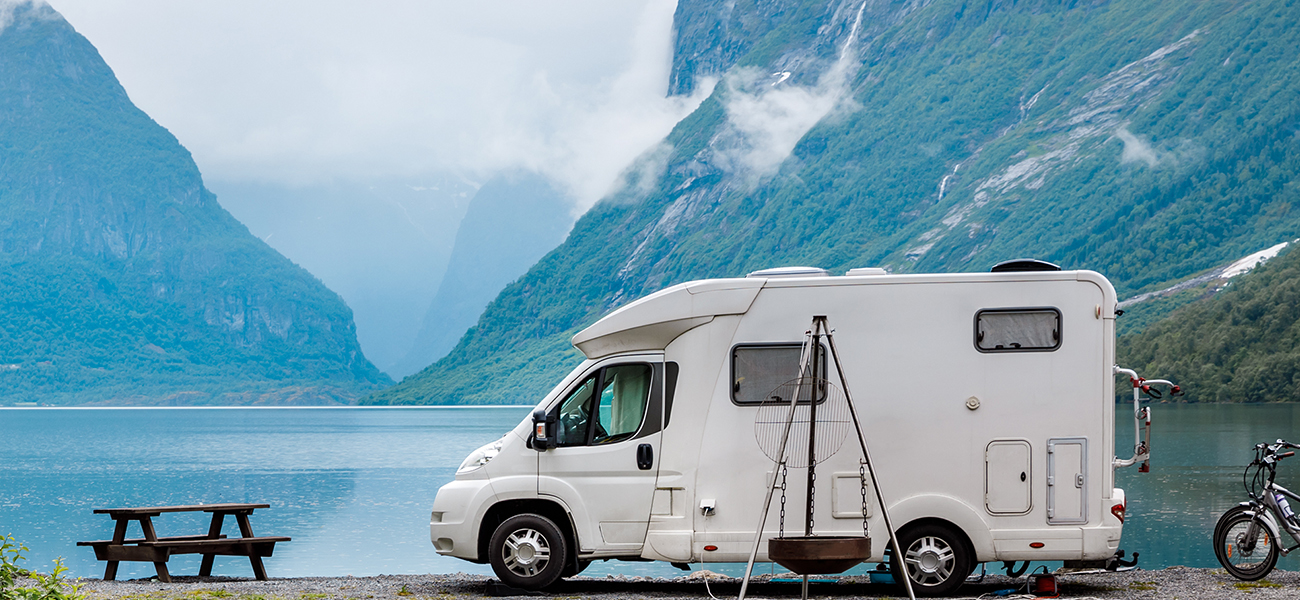
What Abilities to Search for In Recreational Vehicle Batteries
To safeguard the consumers, the batteries of a Recreational Vehicle that you pick require to consist of security functions that shut down the batteries in case of some emergency situation. Keep in mind, your Recreational Vehicle‘s whole DC electrical system should be lithium compatible. Ensure consumers are not able to overcharge or excessively discharge their lithium-ion Recreational Vehicle batteries.
When suitable, integrate an energy management system which disconnects the circuit of your battery. Reliant upon your battery supplier, this function might be included in the battery or as a portion of the unit bundle.
The consumers likewise require a battery that is able to charge effectively. While lithium-ion Recreational Vehicle batteries charge at almost one hundred % efficiency, lead-acid is able to charge at just 85 % efficiency. When utilizing solar power, charging efficiency is specifically essential. Recreational vehicles have restricted roofing and storing area for solar panels, so the consumers should get the most possible energy from their solar panels. When relying on solar power, the distinction between 85 and 100 % charging efficiency is substantial.
Other qualities you must search for in your Recreational Vehicle batteries consist of:
ü Lightweight
ü Compatible with basic inverter chargers
ü Longer life expectancy
ü Higher useable capacity
Though it might appear intimidating to go shopping in the international market for Li-ion batteries, working with a reliable company is a secure method to guarantee your item is geared up with the finest Recreational Vehicle battery for your specs.
Search for a battery company which provides an optimal inventory and extraordinary facility. When potential consumers understand they can anticipate Recreational vehicles including the first-rate lithium batteries, your capacity for sales will enhance. Get in touch with us now to get high-quality lithium-ion batteries for your RV.
Winter Tips for E Bike Battery
Keeping the health and wellness of your e bike battery is among the most convenient methods to make sure that you can appreciate your everyday ride for several years. We have actually shared a lot of daily tips for prolonging the life expectancy of your battery, yet when the seasons‘ modifications and the temperature levels decline, it is important to ensure you are revealing it the correct amount of care.
If you are just one of the lots of riders around intending on making the most of our e bikes‘ year-round abilities, here are a couple of quick things you need to bear in mind as we drive our way right into the chillier months:
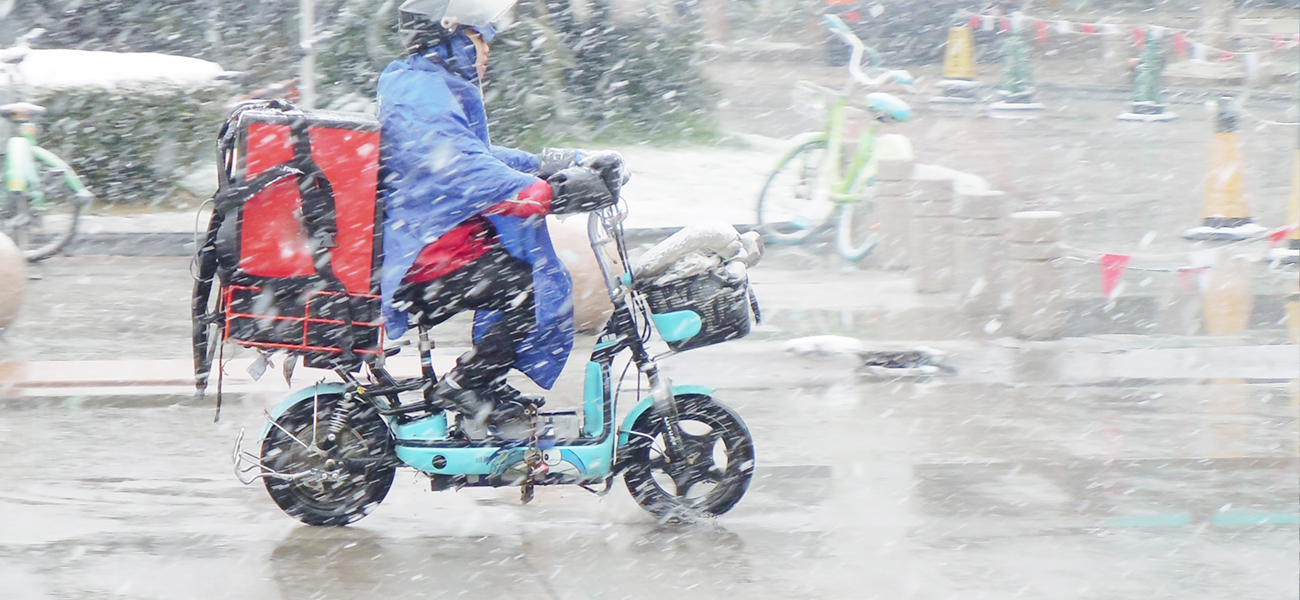
Prepare Your E Bike Battery for Long-Term Storage
If you are putting your battery e bike away for more than 2 weeks, maintain it at about 75 % charged and also look at it each month to make certain it is remaining at that level. Maintaining it totally charged while it is in storage can result in range loss. A day or more is not a reason for concern, but eventually, it will start to build up.
Take Your E Bike Battery Inside
We always recommend storing your bike in a completely dry area over freezing temperature levels, however, if that is not feasible, then take your battery e bike inside. Charge and store the e bike battery indoors as well as in between 50 ° F – 77 ° F/ 10 ° C – 25 ° C. Failing to do so might nullify your warranty, make your battery non-functional, or create a dangerous situation.
Keep the E Bike Battery Away from Cold
There is absolutely nothing more invigorating than a vigorous morning ride, particularly when you have a fat tire bike that can aid you to overcome ice and also snow. Nevertheless, when the temperature level goes below sub-zero, it is a good suggestion to avoid the saddle. In order to maintain your e bike battery running like normal, prevent riding your bike in temperature levels less than -4 ° F/ -20 ° C.
And finally, Do Not Drench Your Battery
This should go without stating; however, you need to never submerse or immerse either your battery e bike or your e bike in water or other fluids. After riding your e bike in damp settings, check your e bike to make certain all parts are clear of moisture, dust, and also particles.
